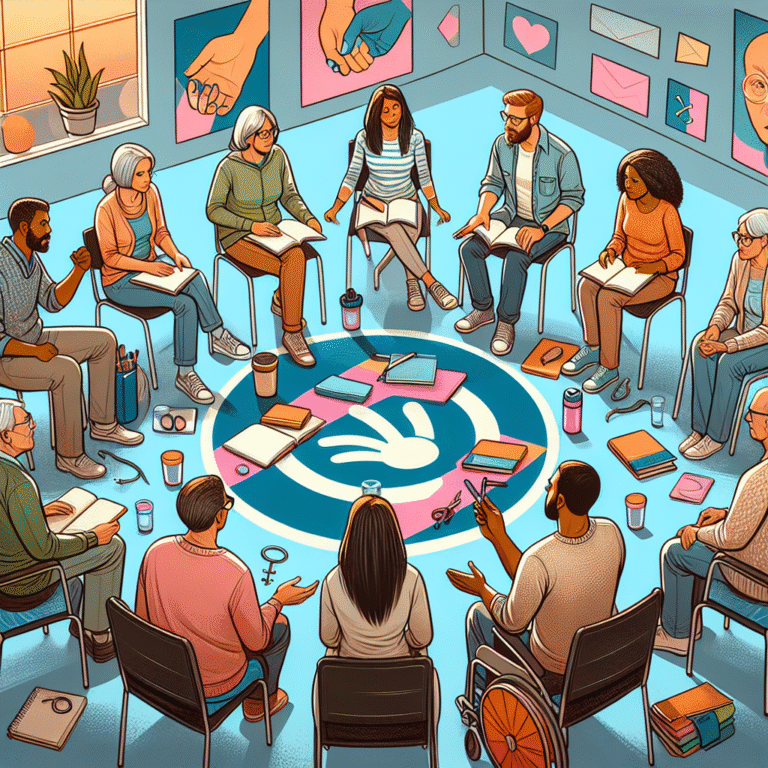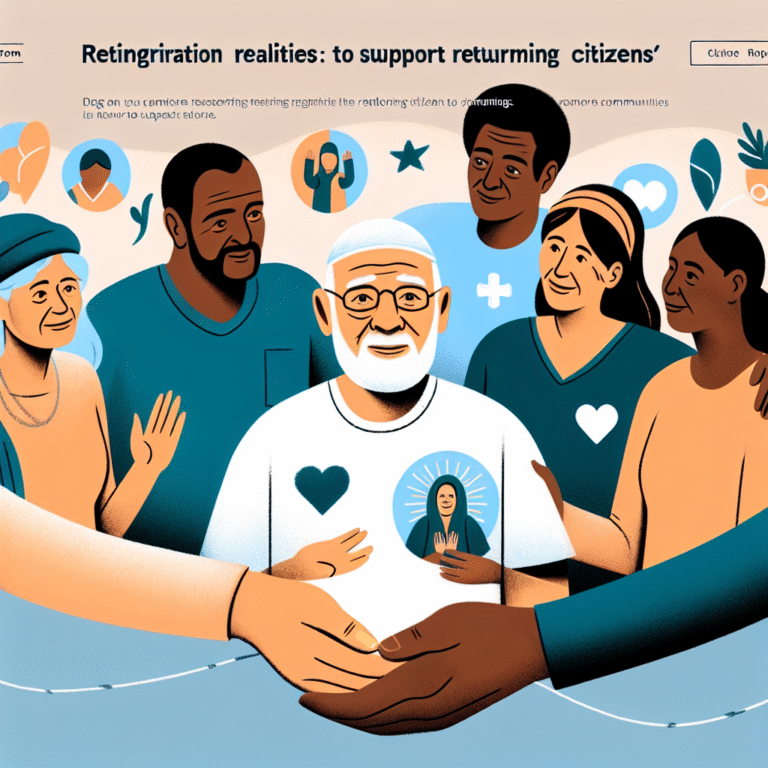
Introduction
In today’s fast-paced and ever-evolving workplace, the quest for inclusivity and efficiency is at the forefront of professional advancement. One pivotal element in this quest is understanding The Role of Technology in Enhancing Workplace Accommodations. As organizations increasingly prioritize diverse workforces, fostering an environment that accommodates everyone, regardless of their abilities, has never been more essential. This article explores how technology serves as a cornerstone in achieving this goal, delivering practical insights and engaging case studies that underline its transformative power.
The Importance of Workplace Accommodations
Workplace accommodations refer to changes or modifications in the work environment that enable individuals with disabilities or different needs to perform their jobs effectively. These adjustments not only extend a helping hand to employees but also ensure productivity and retention.
-
Legal Frameworks: Laws like the Americans with Disabilities Act (ADA) mandate accommodations for individuals with disabilities. However, merely complying with legal frameworks is just the beginning; the true potential lies in embracing technology to foster a genuinely inclusive environment.
-
Diversity and Company Culture: Inclusion boosts morale and engenders a positive workplace culture. By understanding The Role of Technology in Enhancing Workplace Accommodations, organizations can attract a broader talent pool and foster innovation.
- Cost-Benefit Analysis: The initial investment in technology may seem steep, but studies show that companies practicing inclusivity witness increased productivity, greater employee loyalty, and reduced turnover rates.
Identifying Needs: The Role of Technology in Enhancing Workplace Accommodations
Assessing Individual Requirements
Before technology can truly enhance workplace accommodations, it’s crucial to identify the needs of employees. Tools such as online surveys and AI-driven assessment platforms enable employers to gather data on employees’ specific needs efficiently.
Case Study: Tech-Savvy Assessment
Company: XYZ Solutions
Summary: XYZ Solutions implemented an AI-based platform to assess employee needs, resulting in a 30% increase in satisfaction regarding workplace accommodations.
Analysis: This emphasizes that understanding individual needs is the first step in integrating technology effectively.
Customized Solutions: Equipment and Software
The role of technology is not just about compliance; it’s about creating customized solutions that fit individual needs.
1. Assistive Technology
From screen readers to speech recognition software, assistive technologies challenge traditional barriers. These tools allow individuals with varying disabilities to navigate their tasks with ease.
- Statistics: A recent survey revealed that 62% of employees who use assistive devices reported increased job performance.
2. Ergonomic Technology
Technologies that promote physical wellness, such as adjustable desks and smart chairs, also play a crucial role in accommodating diverse physical needs.
Case Study: The Ergonomic Revolution
Company: ABC Corp
Outcome: By investing in ergonomic technologies, ABC Corp saw a 25% reduction in reported work-related injuries.
Analysis: This highlights how ergonomic technology directly contributes to employee well-being and productivity, showcasing one of the essential aspects of The Role of Technology in Enhancing Workplace Accommodations.
Remote Work: Bridging Gaps Through Technology
The rise of remote work has opened new avenues for accommodations. Tools and platforms designed for remote collaboration have become essential in creating inclusive workplaces.
Communication Tools
Video conferencing platforms, chat apps, and collaborative tools (like Slack and Trello) enable seamless communication, allowing employees to work together efficiently from varied locations.
Case Study: The Remote Inclusion Model
Company: GlobalTech
Detail: GlobalTech developed a remote work policy utilizing video conferencing and project management tools that increased participation from employees with disabilities by 40%.
Analysis: This shows how remote work technologies play a vital role in enhancing accommodations and inclusion.
Training and Development
A significant aspect of workplace accommodations involves equipping employees with the necessary skill sets. Technology can simplify training processes.
E-Learning Platforms
-
Accessibility Features: Platforms with accessibility features cater to diverse learning preferences and needs, making training accessible to all employees.
- Gamification: Engaging training modules that incorporate gamification can boost motivation and retention of new skills.
Case Study: Learning Beyond Limits
Company: Skill Builders Inc.
Outcome: The use of an inclusive e-learning platform improved skill acquisition rates among employees with disabilities by 50%.
Analysis: This case reiterates The Role of Technology in Enhancing Workplace Accommodations, underlining technology’s pivotal role in empowering employee development.
Creating an Inclusive Work Environment
Workplace Culture and Technologies
Fostering an inclusive workplace culture requires more than just tools; it involves a commitment from leadership to embrace these technologies fully.
Leadership Training
Training leaders on the importance of inclusivity and the beneficial role of technology helps in embodying a culture that values diversity.
Case Study: Leading by Example
Company: Innovate Corp
Focus: Innovate Corp initiated leadership training focused on inclusivity, leveraging technology for better accommodation.
Analysis: By aligning leadership with inclusivity values, organizations can create a culture where technological enhancements are genuinely utilized.
Feedback Mechanisms: Continuous Improvement
Technology enables organizations to set up robust feedback systems. Regular surveys and performance reviews can gauge the effectiveness of accommodations, providing insights that guide future enhancements.
Tools for Feedback
- Online platforms can deliver real-time feedback, allowing employers to respond swiftly to any accommodation-related concerns.
Challenges and Considerations
While technology plays a crucial role, it is not without challenges. Awareness of potential barriers can help organizations navigate obstacles.
Resistance to Change
Some employees may be skeptical of new technologies. The key is to position these tools as enablers rather than disruptors.
Budget Constraints
While technology investments are essential, budget constraints can limit implementation. Prioritizing key tools based on employee needs is a pragmatic approach.
Data Privacy Concerns
Collecting data to understand accommodation needs must be done responsibly. Transparency about data usage helps build trust.
Conclusion
The evolving landscape of workplace accommodations is inextricably linked to technology. By understanding The Role of Technology in Enhancing Workplace Accommodations, organizations can create inclusive environments that empower diverse talent. As we move toward a more inclusive future, embracing technology will not only fulfill legal requirements but also transform workplace culture, boost morale, and enhance productivity.
To successfully navigate this journey, organizations should:
- Assess needs and gather feedback regularly using technology.
- Invest in versatile solutions that cater to diverse employee requirements.
- Foster a culture of inclusivity, starting with leadership commitment.
With these actionable insights, organizations can unlock the true potential of their workforce, making inclusivity a cornerstone of their operational strategy.
FAQs
1. What are workplace accommodations?
Workplace accommodations are modifications or changes in the work environment that enable employees to perform their jobs effectively, regardless of any disabilities or unique needs.
2. How can technology enhance workplace accommodations?
Technology can provide tools like assistive devices, ergonomic solutions, and communication platforms, catering to individual needs and creating inclusive environments.
3. Are workplace accommodations mandatory?
Yes, in many countries, laws like the ADA require employers to provide reasonable accommodations to qualified employees with disabilities.
4. How can I assess the accommodation needs of employees?
Employers can use surveys, AI-driven assessments, and regular feedback mechanisms to effectively identify and understand the accommodation needs of their employees.
5. What role does leadership play in enhancing workplace accommodations?
Leadership commitment is essential for fostering a culture of inclusivity. By promoting and utilizing technology for accommodation purposes, leaders inspire a workplace where every employee feels valued and supported.
By implementing a forward-thinking approach, organizations can leverage technology not only to comply with regulations but as a powerful tool to enhance workplace accommodation, ensuring a diverse and productive workforce.

















